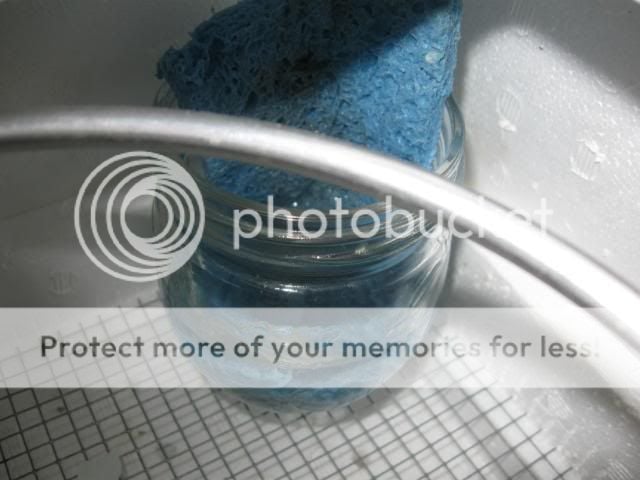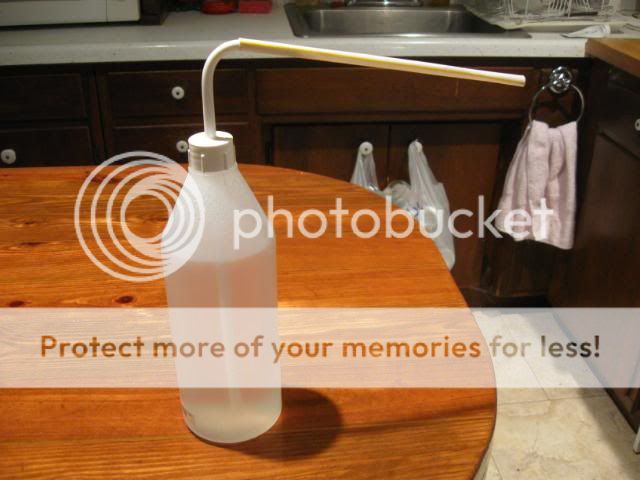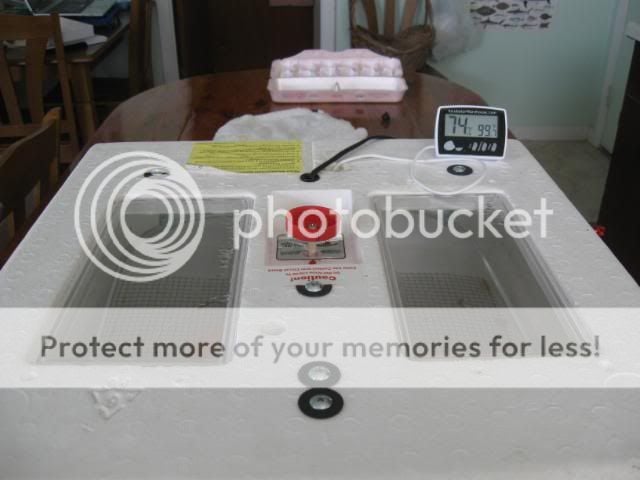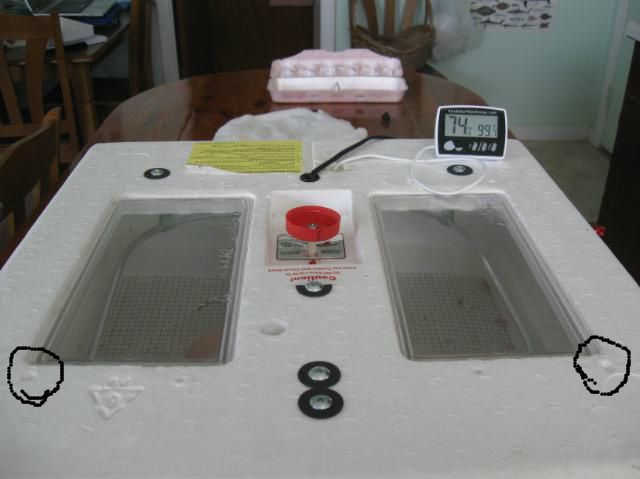I bought a still-air Little Giant incubator and ended up with so much trouble maintaining the temperature and humidity that this time around I'm trying some tricks.
With the help of others in this thread I'm compiling a list of "best practices" for the LG, given the fact that the reason people go with the LG in the first place is to save money. That means they probably don't want to spend a lot on accessories:
1) Get a 12VDC power adapter and computer fan from some computer nut you know or, failing that, Radio Shack. (Being a computer nut myself, this was easy.) Cut off the connector and splice it to the computer fan. If it doesn't turn when plugged in, try reversing the wires. Use (preferably electricians) tape to insulate the wires from each other. Cut out a little square of cheese cloth slightly larger than the face of the fan. Glue one side of the cheese cloth to one side of the computer fan (hot glue guns work for me but you might get away with superglue) . Pull the cheese cloth tight and glue down the opposite side. Do the same for the remaining sides. Why all this trouble? Hey, if you had the money to buy the expensive LG fan accessory, why buy the LG in the first place?
2) Fill two small jars and, put a sponge in each (Thanks cmom! ) to "wick" the moister up and increase the evaporative surface area and placed it in the incubator. Place them in the two "top" corners of the base. Use a "wash bottle" so you can refill them without opening the incubator (Thanks cmom! ).
3) I took a medical thermometer (not digital!), pushed its top into one of the red caps' concaved areas -- it fits snugly into my thermometer -- so it can't fall through the holes left when the red plugs are removed, and leave it in the one "above" the windows. Do NOT use the hole "below" the windows for this! Both red plugs should be removed.
4) Take the cap from a gallon milk jug, turn it upside down and screw it into the top of that nasty little thermostat "knob" to provide a bigger knob with finer control (Thanks cmom! ). For folks like me who want even finer control (meaning a longer lever arm) leave a pair of pliers on the incubator at all times so when the thermometer indicates an out-of-range temperature, I can grab that little nasty little "knob" with the pliers and turn it from the end of the pliers ever so slightly. However you do it, keep in mind if you don't do VERY slight adjustments, letting the temperature settle for at least an hour with each adjustment, you can't get control of the temperature.
Once I got the temperature within range of not killing the eggs if they experience it for a short time (few hours at most at 98.5 up to 101.5), I put the eggs in and start adjusting the temperature.
Any "adjustment" of the styrofoam lid changes the thermal balance. This means opening it to turn the eggs may require additional thermostat adjustments but those should be pursued only if the temperature has been out of whack for a couple of hours (this is to let the incubator heat back up after losing heat/humidity when you opened it). The practice of turning eggs during incubation remains somewhat controversial but controlled experiments conducted at the University College London in the mid 1950s showed a profound increase in percent hatches with egg turning (Thanks Cynthia! ).
With the help of others in this thread I'm compiling a list of "best practices" for the LG, given the fact that the reason people go with the LG in the first place is to save money. That means they probably don't want to spend a lot on accessories:
1) Get a 12VDC power adapter and computer fan from some computer nut you know or, failing that, Radio Shack. (Being a computer nut myself, this was easy.) Cut off the connector and splice it to the computer fan. If it doesn't turn when plugged in, try reversing the wires. Use (preferably electricians) tape to insulate the wires from each other. Cut out a little square of cheese cloth slightly larger than the face of the fan. Glue one side of the cheese cloth to one side of the computer fan (hot glue guns work for me but you might get away with superglue) . Pull the cheese cloth tight and glue down the opposite side. Do the same for the remaining sides. Why all this trouble? Hey, if you had the money to buy the expensive LG fan accessory, why buy the LG in the first place?
2) Fill two small jars and, put a sponge in each (Thanks cmom! ) to "wick" the moister up and increase the evaporative surface area and placed it in the incubator. Place them in the two "top" corners of the base. Use a "wash bottle" so you can refill them without opening the incubator (Thanks cmom! ).
3) I took a medical thermometer (not digital!), pushed its top into one of the red caps' concaved areas -- it fits snugly into my thermometer -- so it can't fall through the holes left when the red plugs are removed, and leave it in the one "above" the windows. Do NOT use the hole "below" the windows for this! Both red plugs should be removed.
4) Take the cap from a gallon milk jug, turn it upside down and screw it into the top of that nasty little thermostat "knob" to provide a bigger knob with finer control (Thanks cmom! ). For folks like me who want even finer control (meaning a longer lever arm) leave a pair of pliers on the incubator at all times so when the thermometer indicates an out-of-range temperature, I can grab that little nasty little "knob" with the pliers and turn it from the end of the pliers ever so slightly. However you do it, keep in mind if you don't do VERY slight adjustments, letting the temperature settle for at least an hour with each adjustment, you can't get control of the temperature.
Once I got the temperature within range of not killing the eggs if they experience it for a short time (few hours at most at 98.5 up to 101.5), I put the eggs in and start adjusting the temperature.
Any "adjustment" of the styrofoam lid changes the thermal balance. This means opening it to turn the eggs may require additional thermostat adjustments but those should be pursued only if the temperature has been out of whack for a couple of hours (this is to let the incubator heat back up after losing heat/humidity when you opened it). The practice of turning eggs during incubation remains somewhat controversial but controlled experiments conducted at the University College London in the mid 1950s showed a profound increase in percent hatches with egg turning (Thanks Cynthia! ).
Last edited:
















